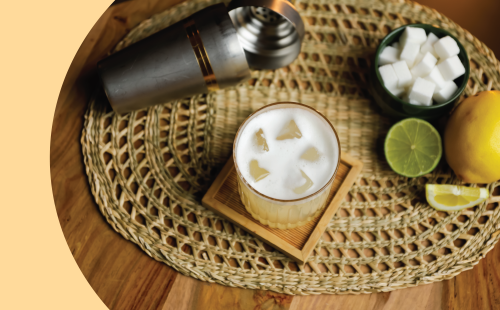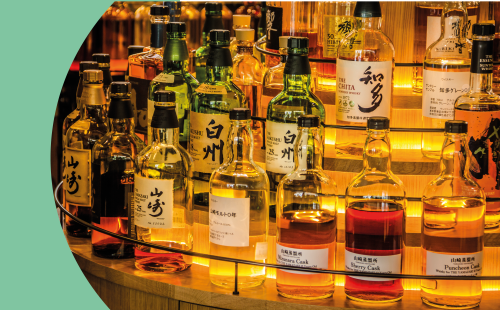For as long as people have been imbibing in beverages of the alcoholic variety, they’ve been seeking hangover remedies right alongside that.
From ancient Rome and Greece to today, each culture has its special way of easing the pain after a night of drinking. Whether it’s a hearty soup from Mexico, scented wreaths from Greece, or a sour pickle juice in Russia, these remedies are more than just treatments. They illuminate how different cultures use their local customs and beliefs in a commonplace problem.
Here we explore the fascinating remedies concocted around the world.
Note: We haven’t tested all these remedies, so please experiment at your own risk. After all, there are only so many hangovers one can (or should) endure for science!
Ancient Rome

The Romans were known for their extravagant feasts and love for wine, which inevitably leads to hangovers. To combat the symptoms, they came up with some unique remedies.
Pliny the Elder, a famous Roman philosopher and author, suggested consuming raw owl’s eggs or fried canary as a hangover cure. These remedies were believed to replenish the body with essential nutrients lost during drinking, similar to modern practices of consuming protein-rich foods to combat hangovers.
Medieval Europe
During medieval times, there was a belief that “like cures like.” This led to a practice called “hair of the dog,” where people would consume more alcohol the morning after heavy drinking.
The term comes from the ancient belief that placing the hair of the dog that bit you on the wound would cure the pain. The goal was to treat withdrawal symptoms by temporarily increasing blood alcohol levels.
17th Century England

During this period, the English often turned to “strong waters,” or what we now recognize as distilled spirits, to treat hangovers. These beverages were typically infused with herbs and spices believed to have medicinal properties.
The common concoction might include ingredients like anise, juniper, and caraway, which were thought to aid digestion and alleviate headaches associated with hangovers.
19th Century United States

The Prairie Oyster, a popular hangover remedy dating back to the 19th century, is still consumed in some regions. This remedy involves a raw egg mixed with Worcestershire sauce, hot sauce, salt, and ground black pepper, all consumed in a single gulp.
The concept behind this is that the raw egg offers protein that stabilizes blood sugar levels while the spicy and salty ingredients stimulate the metabolism, assisting in detoxifying the body.
Early 20th Century Korea

“Haejangguk,” which translates to “soup to chase a hangover,” is a traditional Korean remedy that is still popular today. This soup is made with hearty ingredients such as dried Napa cabbage, vegetables, beef, and congealed ox blood.
The rich nutrients and warm broth are thought to restore depleted nutrients, rehydrate the body, and stimulate digestion, making it an effective cure for hangover symptoms.
Mexico: Menudo (Early 20th Century)

Menudo is a traditional Mexican soup that is typically made with beef stomach (tripe) in a broth that is often seasoned with chili peppers, lime, onions, and cilantro. This soup is well-known for its hearty and robust flavor, making it the perfect choice for reviving the spirit after a night of excess.
Menudo is usually served during festive occasions and weekend mornings, as it is believed to help restore balance and replenish nutrients lost due to alcohol consumption.
Ancient Greece: Laurel Wreaths (circa 400 BC)

In Ancient Greece, the laurel (bay leaves) wreath was not only a symbol of high status and victory but also thought to have medicinal properties.
Greeks would wear these wreaths around their heads after heavy drinking, believing that the scent of bay leaves could alleviate headaches and the spirit of the plant could counteract the effects of alcohol. The aromatic properties of the laurel were considered soothing and were thought to help relieve the symptoms of a hangover.
Japan: Umeboshi (Edo Period, 1603-1868)

Umeboshi are pickled ume fruits, a type of Japanese plum that is sour and salty in taste. These were traditionally used as a digestive aid and were believed to help eliminate toxins, restore vitality, and enhance liver function, which is crucial in processing alcohol.
The high acidity and salt content are thought to help replenish electrolytes and accelerate recovery.
Germany: Katerfrühstück (Early 20th Century)

The “hangover breakfast” in Germany typically includes rollmops, which are pickled herring filets rolled around pieces of gherkin and onion. The combination of fatty fish, high in omega-3 acids, and the pickling juice, rich in electrolytes, is thought to help restore nutrients and balance hydration levels in the body.
This meal is often accompanied by other pickled items and sometimes a strong coffee or herbal tea, aiding in detoxification and providing a gentle stimulant to reduce hangover lethargy.
Russia: Pickle Juice (19th Century)

In Russia, drinking pickle juice, or brine from pickled cucumbers, is a traditional remedy for hangovers. The high salt and vinegar content helps to replenish electrolytes and minerals lost due to dehydration.
Pickle juice is also thought to help settle the stomach and speed up recovery by balancing the body’s pH and facilitating faster toxin removal. It’s often consumed straight or added to dishes as part of the morning recovery meal.
Whether these remedies hold scientific merit or are simply placebo effects steeped in tradition, they offer a fascinating glimpse into the human condition and our endless quest to balance indulgence with well-being. So the next time you find yourself in need of a hangover cure, perhaps consider reaching for a remedy tested by time—or keep it simple with water and rest, the truest cure of all.





